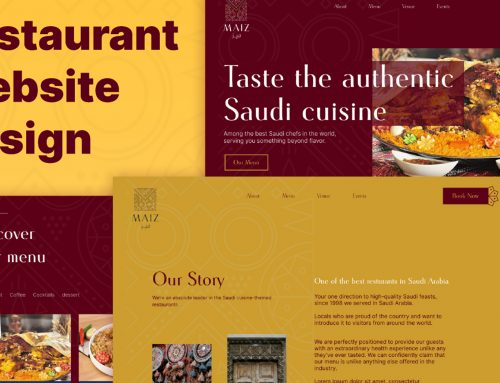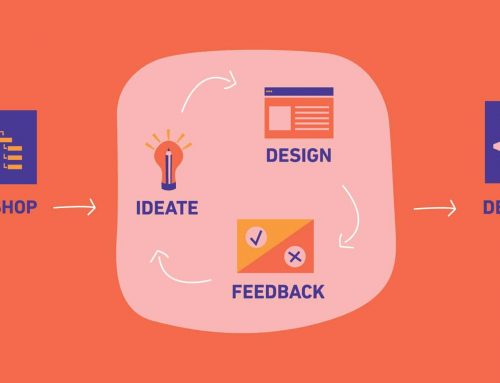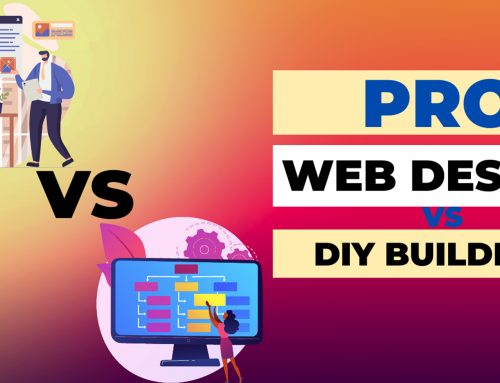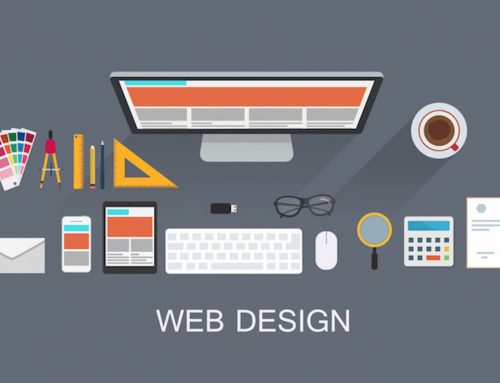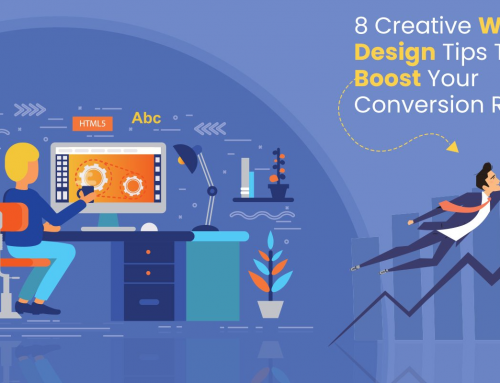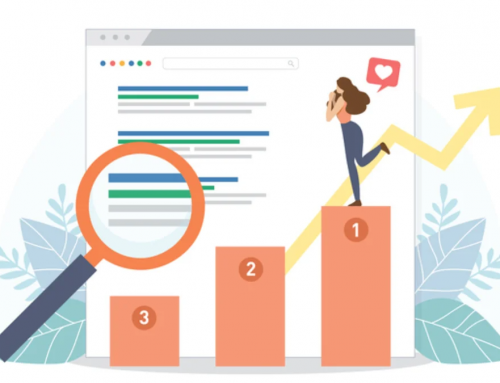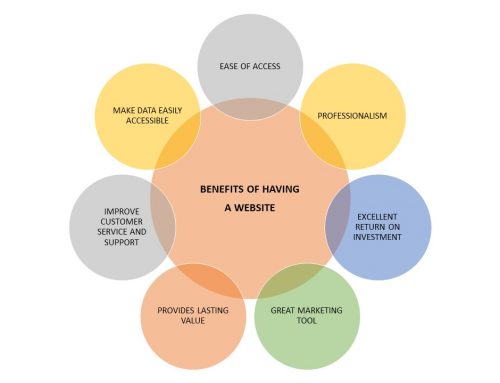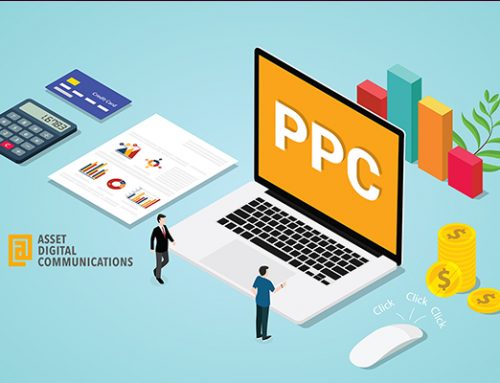The Role of User Experience (UX) in Web Design for Birmingham Companies
In today’s digitally driven world, the success of a company’s online presence hinges on more than just an eye-catching design. User Experience (UX) has emerged as a pivotal factor that can make or break a website’s effectiveness and its ability to engage visitors. From seamless navigation to intuitive interactions, the user experience plays a paramount role in shaping a positive impression of a brand and driving conversions.
For Birmingham companies seeking to establish a strong foothold in the competitive digital landscape, mastering the art of user experience in web design is no longer an option—it’s a necessity. The experience a visitor has while interacting with a company’s website can significantly impact their perception of the brand and their willingness to explore further.
In this article, we will delve into the importance of user experience in web design tailored specifically for Birmingham companies. We will explore the key elements that contribute to a compelling user experience, the significance of understanding Birmingham’s unique audience, and the role of UX in achieving business objectives.
Join us on this journey as we unravel the essence of user experience in web design and discover how Birmingham companies can elevate their online presence through thoughtful and strategic UX practices. Whether you are a well-established business or a budding startup, understanding and prioritizing user experience will unlock the potential to forge lasting connections with your target audience and thrive in the digital realm.
Understanding User Experience (UX) and Its Impact
User experience (UX) refers to the overall experience a user has while interacting with a website or digital product. It encompasses every aspect of the user’s journey, from the moment they land on the website to when they accomplish their goals or tasks. UX design focuses on creating intuitive, seamless, and enjoyable experiences for users, ensuring that their needs are met efficiently and effectively.
In web design, UX plays a central role in shaping the success of a website. It goes beyond aesthetics and encompasses the layout, navigation, content, and functionality, all working together to enhance user satisfaction and engagement. A well-designed UX anticipates user behavior, addresses pain points, and aligns with the brand’s objectives.
For Birmingham companies, the impact of a positive UX on their online presence cannot be overstated. First and foremost, a positive user experience fosters a favorable perception of the brand. When users find a website easy to use and navigate, it instills a sense of trust and credibility in the company. This positive impression can lead to increased customer loyalty and repeat business.
Customer satisfaction is another significant outcome of a well-crafted UX. A seamless and enjoyable experience leaves users satisfied, encouraging them to explore further, engage with the website’s content, and ultimately, take the desired actions—such as making a purchase or filling out a contact form. Satisfied customers are more likely to recommend the company to others, amplifying its reach and reputation.
Moreover, a positive UX can have a direct impact on the website’s performance metrics. Search engines, such as Google, consider user engagement signals, like time spent on the website and bounce rates, when determining search rankings. A website with high user engagement and low bounce rates is seen as more relevant and valuable to users, leading to improved search visibility for Birmingham companies.
The business success of Birmingham companies is closely tied to the user experience they deliver. A website that is designed with the user in mind can drive conversions, generate leads, and increase sales. By streamlining the user journey and eliminating friction points, the website becomes a powerful tool to achieve business goals.
User experience (UX) is a critical component of web design that significantly impacts Birmingham companies’ online presence, customer satisfaction, and overall business success. A positive UX creates a lasting impression on users, fostering trust, loyalty, and advocacy. By prioritizing UX design and crafting seamless experiences, Birmingham companies can elevate their online presence, attract and retain customers, and stay ahead in the digital landscape.
The Elements of a Great User Experience
User Research and Understanding Birmingham’s Target Audience
User research serves as the bedrock of a great user experience (UX) in web design for Birmingham companies. It involves gathering insights about the preferences, behaviors, and pain points of the specific target audience in Birmingham. By delving into the needs and motivations of users, web designers can make informed decisions that create a tailored and effective UX.
Conducting user research allows designers to understand what drives Birmingham users to visit a website and what they hope to accomplish. This knowledge informs the design process, ensuring that the website addresses user pain points and offers solutions that resonate with the target audience.
User research also helps in identifying the user personas that represent Birmingham’s diverse customer base. These personas embody typical characteristics and behaviors of different user groups, enabling designers to tailor the UX to specific needs and preferences.
Information Architecture and Intuitive Navigation
A well-organized information architecture is pivotal in creating a seamless UX for Birmingham users. Intuitive navigation is the key to helping users find what they are looking for quickly and effortlessly. Clear menus, organized content, and a logical flow enable users to explore the website with ease, enhancing their overall experience.
In Birmingham’s competitive digital landscape, visitors expect websites to be user-friendly and easily navigable. When users can quickly access the information or products they seek, they are more likely to engage with the content and remain on the site for longer durations.
Effective information architecture also ensures that Birmingham companies can showcase their products, services, and important information in a coherent manner. By categorizing content logically, designers enable users to make informed decisions and find relevant information without feeling overwhelmed.
Visual Design and Aesthetics
Visual design and aesthetics significantly contribute to a positive UX for Birmingham users. Appealing layouts, thoughtful typography, well-chosen color schemes, and high-quality imagery create a visually engaging and memorable experience.
Aesthetically pleasing design not only captures users’ attention but also conveys the brand’s personality and values. Birmingham companies can utilize visuals to establish an emotional connection with their audience, leaving a lasting impression and reinforcing brand identity.
Consistency in visual design is essential to provide a cohesive experience throughout the website. Maintaining uniformity in colors, fonts, and design elements creates a sense of familiarity and helps users navigate the site with ease.
Responsive Design and Mobile Experience
With the proliferation of mobile devices, responsive design is a critical element in providing a seamless UX for Birmingham users. A responsive website adapts to different screen sizes and resolutions, ensuring that content remains easily accessible and readable across devices.
Mobile optimization is crucial for Birmingham companies to cater to their on-the-go audience. By optimizing the design for smaller screens, designers enhance user engagement and prevent potential frustrations caused by non-responsive elements.
The responsive design also positively impacts search engine rankings. Google, for instance, prioritizes mobile-friendly websites in its search results, making mobile optimization essential for improving visibility in Birmingham’s local searches.
The elements of a great user experience (UX) in web design for Birmingham companies encompass user research, intuitive navigation, visual design, and responsive design. Understanding the specific needs and preferences of Birmingham’s target audience informs design decisions and fosters tailored experiences. Intuitive navigation ensures easy exploration and engagement, while visual design and aesthetics create a lasting impression. Implementing responsive design optimizes the experience across devices and enhances search engine visibility. By prioritizing these elements, Birmingham companies can deliver outstanding UX and establish a strong online presence that resonates with their local audience.
Interaction Design and Engaging Interactions
User-Friendly Forms and Input Fields
User-friendly forms and input fields are crucial components in creating a positive user experience (UX) for Birmingham users. Forms serve as a gateway for user engagement, enabling them to submit inquiries, subscribe to newsletters, or complete purchases. Designers must prioritize simplicity and efficiency to minimize user effort and maximize form completion rates.
In Birmingham’s fast-paced digital landscape, users value websites that respect their time and provide a smooth form-filling process. To achieve this, designers should keep forms concise and avoid unnecessary fields. Utilizing autofill options, clear labels, and placeholders can expedite form completion, reducing the likelihood of user frustration and abandonment.
Additionally, employing real-time validation can assist users in correcting errors on the spot, enhancing the overall form-filling experience. When users encounter a seamless and hassle-free form, they are more likely to engage with the website’s services and convert into valuable leads for Birmingham businesses.
Microinteractions and Feedback
Microinteractions and feedback play a significant role in enhancing the UX for Birmingham users. Microinteractions are subtle, yet meaningful, interactions that occur throughout the user journey, providing users with small moments of delight or reassurance. Feedback, on the other hand, acknowledges user actions and provides relevant responses to solidify the interaction.
Incorporating microinteractions and feedback into web design creates a more engaging and immersive experience for Birmingham users. For instance, a well-designed button with a pleasing hover effect or a subtle animation when completing a form can add a touch of delight to the overall UX.
Furthermore, providing visual and auditory cues as feedback reaffirms to Birmingham users that their actions are recognized and processed. When users receive immediate responses to their interactions, such as successful form submissions or error notifications, they feel more confident in their actions and are more likely to continue engaging with the website.
Microinteractions and feedback also contribute to building a sense of trust and credibility with Birmingham users. By validating their actions and promptly addressing their queries or concerns, businesses demonstrate a customer-centric approach, fostering a positive perception of the brand.
Interaction design and engaging interactions are vital for crafting a positive user experience (UX) for Birmingham users. User-friendly forms and input fields simplify the user journey, making it effortless for users to interact with the website. Microinteractions and feedback enhance engagement by adding moments of delight and acknowledging user actions. Birmingham companies that prioritize these aspects of interaction design can build meaningful connections with their audience, encourage deeper engagement, and establish a reputation for providing outstanding online experiences.
Usability Testing and Iterative Design
Usability testing plays a pivotal role in evaluating and improving the user experience (UX) of Birmingham websites. It involves observing real users as they interact with the website to identify potential pain points, gather feedback, and understand how effectively the website meets their needs. By conducting usability tests, Birmingham companies gain valuable insights into how users perceive and interact with their website, allowing them to make informed decisions for enhancement.
Usability testing helps uncover usability issues that may not be evident to the website designers. Birmingham users might encounter difficulties in navigating the website, completing tasks, or locating essential information. Through user testing, designers can identify these stumbling blocks and work on resolving them, ensuring a smoother and more intuitive experience for their audience.
The significance of usability testing lies in its ability to validate design assumptions and prioritize improvements. By watching users engage with the website, designers can assess whether their design decisions align with user expectations and needs. This real-world feedback helps in making data-driven decisions to optimize the website for maximum user satisfaction.
Furthermore, usability testing enables Birmingham companies to gain a deeper understanding of their target audience. By observing user behavior and listening to their feedback, companies can refine their user personas, fine-tune their content strategy, and tailor the website to better meet the specific preferences of their audience.
Incorporating iterative design into the web design process complements usability testing by ensuring continuous improvement based on user feedback. Iterative design involves making incremental changes to the website based on user testing results, then retesting those changes to gather further feedback. This iterative cycle allows designers to refine the UX over time, addressing issues and enhancing user satisfaction.
The benefits of iterative design for Birmingham websites are multi-fold. Firstly, it reduces the risk of launching a website with substantial usability issues by addressing and rectifying problems early on. Iterative design also helps companies stay agile and adapt to changing user needs and preferences in Birmingham’s dynamic market.
Moreover, the iterative approach fosters a culture of ongoing improvement and customer-centricity within Birmingham companies. By continuously seeking user feedback and implementing user-driven changes, businesses demonstrate their commitment to providing a top-notch experience to their customers.
Usability testing and iterative design are indispensable components of creating an exceptional user experience (UX) for Birmingham websites. Usability testing allows businesses to gain valuable insights into user behavior and pain points, facilitating informed design decisions. Iterative design complements usability testing by enabling continuous improvement based on user feedback, ensuring a seamless and engaging UX that resonates with Birmingham users. By adopting these practices, Birmingham companies can achieve a website that not only satisfies user needs but also elevates their online presence and fosters long-term customer loyalty.
Accessibility and Inclusive Design
Creating an inclusive and user-friendly user experience (UX) for all Birmingham users is of paramount importance, and accessibility lies at the heart of achieving this goal. Inclusive design ensures that web content is accessible to individuals with disabilities, providing them with equal opportunities to engage with and benefit from the website’s offerings.
The importance of accessibility cannot be overstated. Birmingham companies have a diverse customer base, and ensuring that their website is usable by everyone, regardless of their abilities, is not just a legal requirement but also an ethical responsibility. By embracing inclusive design, companies show that they value all users and are committed to providing an inclusive and welcoming digital experience.
Accessibility guidelines, such as the Web Content Accessibility Guidelines (WCAG), provide a framework for making web content accessible to individuals with various disabilities, including visual, auditory, motor, and cognitive impairments. Adhering to these guidelines ensures that web content can be perceivable, operable, understandable, and robust for all users.
For Birmingham users with visual impairments, providing alternative text for images and ensuring proper color contrast can make web content more accessible. Users with motor impairments may rely on keyboard navigation, so it’s crucial to ensure that all interactive elements can be accessed using a keyboard alone.
Additionally, inclusivity extends to users with hearing impairments. Providing closed captions and transcripts for multimedia content ensures that all users can access and understand the information being conveyed.
Inclusive design not only benefits individuals with disabilities but also enhances the overall user experience for all Birmingham users. For instance, well-structured content and clear navigation can benefit everyone, not just those with disabilities. Making web content more accessible often leads to a cleaner and more organized design, making it easier for all users to find and interact with the information they seek.
Moreover, accessibility also impacts search engine rankings. Search engines like Google prioritize websites that provide a seamless user experience and are accessible to all users, including those with disabilities. By complying with accessibility guidelines, Birmingham companies can improve their search engine visibility and attract a wider audience.
Accessbility and inclusive design are crucial components in creating an inclusive and user-friendly user experience (UX) for Birmingham users. By adhering to accessibility guidelines and making web content usable for individuals with disabilities, companies demonstrate their commitment to providing an inclusive digital experience. Inclusive design not only benefits users with disabilities but also enhances the overall UX for all users, ultimately leading to increased user satisfaction, improved search engine visibility, and a positive brand perception in Birmingham’s digital landscape.
Measuring and Analyzing UX
Measuring and analyzing user experience (UX) is crucial for Birmingham websites seeking to optimize their online presence and continually improve their digital offerings. By utilizing various methods and tools, companies can gain valuable insights into user behavior, preferences, and pain points, allowing them to make informed design decisions that enhance the overall UX.
One of the primary methods for measuring UX is gathering user feedback. Birmingham companies can solicit feedback through surveys, feedback forms, or usability testing sessions. Feedback directly from users provides invaluable insights into their firsthand experiences, helping designers identify areas that need improvement and understand user expectations better.
Analytics tools play a significant role in analyzing UX performance. By leveraging tools like Google Analytics, Birmingham companies can access crucial data, such as user engagement, traffic sources, bounce rates, and conversion rates. Analytics data allows companies to assess how users interact with the website, identify popular pages, and track conversion funnels to optimize user journeys.
Heatmaps and click-tracking tools offer visual representations of user interactions on Birmingham websites. Heatmaps reveal which areas of a webpage receive the most attention and interaction, providing insights into user behavior and page performance. Click-tracking tools highlight the most-clicked elements, indicating user interest and engagement patterns.
A/B testing, or split testing, is another valuable method for measuring UX effectiveness. By creating two versions of a webpage and directing users to each version randomly, Birmingham companies can compare performance metrics and identify which design elements lead to better user engagement and conversions.
Incorporating user behavior analysis tools allows Birmingham companies to gain deeper insights into how users navigate the website. Session recording tools capture user interactions, enabling designers to understand how users navigate, where they encounter difficulties, and what elements contribute to a positive experience.
Social media monitoring is an additional method to gauge user sentiment and opinions about the website. Birmingham companies can monitor social media platforms for user reviews, comments, and discussions related to the website, providing a wealth of qualitative feedback for improvement.
The importance of measuring and analyzing UX lies in its ability to empower Birmingham companies with data-driven insights. By using a combination of user feedback, analytics, and behavior analysis, companies can make informed design decisions that align with user needs and preferences. Continuous monitoring and analysis enable companies to adapt to changing user expectations, optimize their digital offerings, and create exceptional user experiences that resonate with their Birmingham audience.
Ask Us About User Experience (UX) In Web Design
In the ever-evolving digital landscape, the role of user experience (UX) in web design holds paramount importance for Birmingham companies seeking to thrive in their online endeavors. Throughout this article, we have explored the essential elements that contribute to a successful UX tailored specifically for Birmingham’s diverse audience.
Understanding the target audience through user research and intuitive navigation are fundamental pillars of UX design. Visual appeal and aesthetics, coupled with responsive design, ensure that Birmingham users are captivated regardless of the device they use.
Engaging content and strategic call-to-actions further enhance the UX, driving user interactions and conversions. Optimization for speed and performance, alongside mobile-friendliness, solidifies the positive experience for Birmingham users, fostering loyalty and trust.
Moreover, inclusive design and adherence to accessibility guidelines demonstrate a commitment to inclusivity, benefiting all users. Measuring and analyzing UX through feedback and data-driven insights empower Birmingham companies to make informed design decisions, continually improving their digital offerings.
Ultimately, a positive UX in web design plays a pivotal role in driving customer satisfaction, engagement, and business growth. Birmingham companies should prioritize UX considerations, adopting user-centric approaches to create impactful and user-friendly websites that resonate with their local audience.
By recognizing the significance of UX, Birmingham companies can forge meaningful connections with their customers, gain a competitive edge, and solidify their position as leaders in Birmingham’s digital landscape. Embracing a user-first mindset, companies can navigate the digital realm with confidence, providing exceptional experiences that leave a lasting impression on their users and drive success in the digital age.




